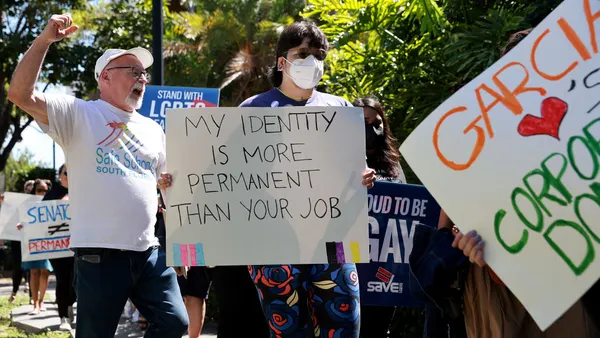Dive Brief:
- In an effort led by Arkansas Gov. Asa Hutchinson, all 50 U.S. governors recently signed an agreement to expand K-12 computer science education in their states. The move follows a letter sent to governors from over 500 business, education and nonprofit leaders — including Jeff Bezos and Bill Gates — urging an update to computer science education curriculum across the country.
- The governors’ commitment aims to increase the number of computer science courses offered in high schools and suggests strategies such as providing state funding, supporting pathways in the field and creating equitable access to the subject for all students.
- “In the 21st century, it is more important than ever that all students have the opportunity to learn computer science to inform them as global citizens, to prepare them for the future of work and to protect them from cybersecurity threats,” the governors’ compact said.
Dive Insight:
Just 51% of high schools offered computer science courses in 2021, according to the fifth annual State of Computer Science Education report from The Code.org Advocacy Coalition, Computer Science Teachers Association and Expanding Computing Education Pathways Alliance.
It’s important that the National Governors Association, which organized this effort, is held accountable for its commitments, said Leigh Ann DeLyser, executive director of CSforALL, an organization focused on integrating computer science in K-12 for all students. Following new annual data from the State of Computer Science Education report is one way to do that, she said, adding that state funding toward computer science education should also come with an accountability component measuring the governors’ goals to expand these courses.
The 2021 report found that disparities persist among English language learners, students with disabilities and economically disadvantaged students, who are still underrepresented in high school computer science enrollment. Hispanic/Latino students are 1.4 times less likely than their White and Asian classmates to enroll in a computer science course, the report said.
But an even more persistent gap is the low enrollment of girls and young women in computer science courses, said Sean Roberts, vice president of government affairs of Code.org.
“States that have even done well with racial and ethnic gaps still see the stubborn and persistent gap in enrollment between young men and young women taking computer science,” Roberts said.
An exception to this significant gender disparity can be found in South Carolina, Mississippi and Maryland, he said. All three states have a graduation requirement of some sort that has led to at least 40% of young women enrolling in computer science courses, Roberts said.
The governors’ new commitment to expanding computer science outlines several potential ways to create equitable access. This includes improving state data collection, reporting and analysis of student enrollment in these courses, as well as offering more computer science courses to elementary and middle school students “to build student interest and confidence before traditionally underserved populations begin to self-select out of the subject.”
A recent study by researchers at the University of Illinois at Urbana-Champaign also found that as more California high school students signed up for computer science classes, enrollment numbers in humanities courses declined. But DeLyser said computer science doesn’t have to take away from the focus on those subjects. In fact, she said, computer science can be integrated into a modern approach to learning the humanities.
For example, Virginia history classrooms have used data science to understand the migration of Black farmers throughout the state during the 1800s, DeLyser said. She cited another example of a drama teacher in New York City using an interactive coding app to help visualize what a stage show would look like for the plays students wrote.
“Just like we’re seeing in modern museums how technology is infusing art, we’re seeing it in our schools, too,” DeLyser said.













